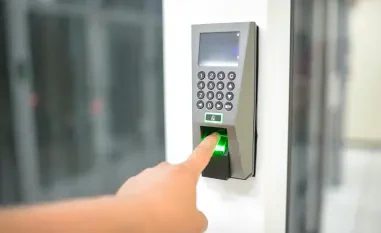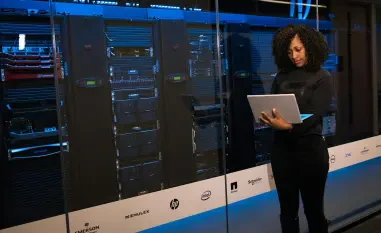In the ever-evolving world of cybersecurity and cloud technology, few bring as much insight as Malik Haidar. With a career spanning multinational corporations, Malik has become a leading expert in combating digital threats through innovative analytics, intelligence, and security strategies. His unique ability to blend business needs with cutting-edge security solutions has made him a sought-after voice in the industry. Today, we dive into his work on cloud-based platforms, exploring how these technologies are transforming security management, enhancing remote access, and ensuring reliability for users across various sectors. Our conversation touches on the power of real-time updates, the importance of user feedback, and the future of integrated security systems.
How did you first get involved in cloud-based security solutions, and what drives your passion for this field?
My journey into cloud-based security started over a decade ago when I saw how traditional systems struggled to keep up with evolving threats. I was working with a multinational corporation at the time, and we faced constant challenges with on-premise solutions—slow updates, limited scalability, and high maintenance costs. That’s when I realized the potential of the cloud to revolutionize security. What drives me is the ability to create systems that not only protect but also adapt in real-time to new risks. Seeing a solution I’ve worked on safeguard a business or a community—that’s what keeps me going.
What are some of the biggest challenges security managers face today, and how do cloud platforms address those issues?
Security managers are often juggling multiple priorities—ensuring safety, managing budgets, and keeping systems up to date. One of the biggest challenges is response time; when an issue arises, delays can be costly or even dangerous. Cloud platforms tackle this by enabling remote diagnostics and instant updates without needing on-site visits. They also offer scalability, so whether you’re managing a small business or a large enterprise, the system grows with you. Plus, the centralized data and analytics help security managers spot trends or vulnerabilities before they become problems.
How does a cloud-based system differ from traditional on-premise setups when it comes to maintaining and improving functionality over time?
The difference is night and day. With on-premise systems, every update or fix often requires physical access, which means downtime and labor costs. Cloud-based systems, on the other hand, allow for seamless updates rolled out instantly across all users. We can push new features or security patches in real-time, ensuring everyone benefits without disruption. It’s also easier to gather user data and feedback through the cloud, so we’re constantly refining the platform based on real-world usage, something that’s much harder with traditional setups.
Can you share a memorable example of how remote management through the cloud has made a tangible difference for a client or project?
Absolutely. I recall working with a property management company that oversaw multiple buildings across different cities. They had an issue with an access control system malfunctioning at one site, which could have locked out tenants for hours. Because we were using a cloud platform, I was able to log in from my office, diagnose the problem, and deploy a fix within minutes—all without sending a technician. The client was amazed at how quickly we resolved it, and it saved them significant costs and frustration. That kind of responsiveness is what the cloud enables.
In terms of reliability, how do cloud solutions ensure uptime and minimize disruptions for users?
Reliability is a cornerstone of any cloud solution. We leverage the infrastructure of major cloud providers who invest heavily in redundancy and failover systems—something most local setups can’t match. We also build in proactive monitoring, so if a device goes offline or a system hiccup occurs, we often detect it before the user does. Alerts and automated responses kick in to address issues, minimizing downtime. It’s about creating a system that’s always on, so users can focus on their operations without worrying about tech failures.
How do cloud platforms handle data security and privacy, especially compared to older, local systems?
Data security and privacy are non-negotiable in the cloud. Unlike local systems, where security often depends on the user’s in-house expertise, cloud platforms are built with robust encryption and compliance standards from the ground up. We have dedicated teams focused on threat detection and regulatory requirements, ensuring data is protected whether it’s at rest or in transit. Compared to local systems, which can be vulnerable if not regularly updated, the cloud offers a more consistent and expert-driven approach to safeguarding sensitive information.
What role does user feedback play in shaping the development of cloud-based security tools?
User feedback is invaluable—it’s essentially our roadmap. We actively engage with end-users, dealers, and integrators to understand their pain points and needs. For instance, we once received input from a security integrator about needing a more intuitive interface for system setup. Based on that, we revamped the dashboard to simplify navigation, which cut configuration time significantly. Feedback loops like these ensure we’re not just building what we think works, but what actually solves real problems for our users.
How do partnerships and integrations with other technologies enhance the capabilities of cloud security platforms?
Partnerships are a game-changer. By integrating with other manufacturers or systems—like audio or video surveillance tools—through cloud-to-cloud connections, we create a more cohesive security ecosystem. For example, linking audio communication with access control allows for real-time verification of visitors, adding an extra layer of protection. These integrations mean our platform isn’t just a standalone tool; it becomes part of a broader solution that enhances overall security and user experience, benefiting everyone from small businesses to large enterprises.
What’s your forecast for the future of cloud-based security technologies over the next few years?
I believe we’re just scratching the surface of what cloud-based security can achieve. Over the next few years, I expect to see even deeper integrations with artificial intelligence and machine learning, enabling predictive threat detection on a whole new level. We’ll also see greater emphasis on user-centric design, making these tools accessible to non-technical users like property managers. The scalability of the cloud will continue to democratize high-end security, ensuring small businesses can access the same robust protections as large corporations. It’s an exciting time, and I think the pace of innovation will only accelerate.













